1.1: Key Concepts
- Page ID
- 153969
\( \newcommand{\vecs}[1]{\overset { \scriptstyle \rightharpoonup} {\mathbf{#1}} } \)
\( \newcommand{\vecd}[1]{\overset{-\!-\!\rightharpoonup}{\vphantom{a}\smash {#1}}} \)
\( \newcommand{\dsum}{\displaystyle\sum\limits} \)
\( \newcommand{\dint}{\displaystyle\int\limits} \)
\( \newcommand{\dlim}{\displaystyle\lim\limits} \)
\( \newcommand{\id}{\mathrm{id}}\) \( \newcommand{\Span}{\mathrm{span}}\)
( \newcommand{\kernel}{\mathrm{null}\,}\) \( \newcommand{\range}{\mathrm{range}\,}\)
\( \newcommand{\RealPart}{\mathrm{Re}}\) \( \newcommand{\ImaginaryPart}{\mathrm{Im}}\)
\( \newcommand{\Argument}{\mathrm{Arg}}\) \( \newcommand{\norm}[1]{\| #1 \|}\)
\( \newcommand{\inner}[2]{\langle #1, #2 \rangle}\)
\( \newcommand{\Span}{\mathrm{span}}\)
\( \newcommand{\id}{\mathrm{id}}\)
\( \newcommand{\Span}{\mathrm{span}}\)
\( \newcommand{\kernel}{\mathrm{null}\,}\)
\( \newcommand{\range}{\mathrm{range}\,}\)
\( \newcommand{\RealPart}{\mathrm{Re}}\)
\( \newcommand{\ImaginaryPart}{\mathrm{Im}}\)
\( \newcommand{\Argument}{\mathrm{Arg}}\)
\( \newcommand{\norm}[1]{\| #1 \|}\)
\( \newcommand{\inner}[2]{\langle #1, #2 \rangle}\)
\( \newcommand{\Span}{\mathrm{span}}\) \( \newcommand{\AA}{\unicode[.8,0]{x212B}}\)
\( \newcommand{\vectorA}[1]{\vec{#1}} % arrow\)
\( \newcommand{\vectorAt}[1]{\vec{\text{#1}}} % arrow\)
\( \newcommand{\vectorB}[1]{\overset { \scriptstyle \rightharpoonup} {\mathbf{#1}} } \)
\( \newcommand{\vectorC}[1]{\textbf{#1}} \)
\( \newcommand{\vectorD}[1]{\overrightarrow{#1}} \)
\( \newcommand{\vectorDt}[1]{\overrightarrow{\text{#1}}} \)
\( \newcommand{\vectE}[1]{\overset{-\!-\!\rightharpoonup}{\vphantom{a}\smash{\mathbf {#1}}}} \)
\( \newcommand{\vecs}[1]{\overset { \scriptstyle \rightharpoonup} {\mathbf{#1}} } \)
\(\newcommand{\longvect}{\overrightarrow}\)
\( \newcommand{\vecd}[1]{\overset{-\!-\!\rightharpoonup}{\vphantom{a}\smash {#1}}} \)
\(\newcommand{\avec}{\mathbf a}\) \(\newcommand{\bvec}{\mathbf b}\) \(\newcommand{\cvec}{\mathbf c}\) \(\newcommand{\dvec}{\mathbf d}\) \(\newcommand{\dtil}{\widetilde{\mathbf d}}\) \(\newcommand{\evec}{\mathbf e}\) \(\newcommand{\fvec}{\mathbf f}\) \(\newcommand{\nvec}{\mathbf n}\) \(\newcommand{\pvec}{\mathbf p}\) \(\newcommand{\qvec}{\mathbf q}\) \(\newcommand{\svec}{\mathbf s}\) \(\newcommand{\tvec}{\mathbf t}\) \(\newcommand{\uvec}{\mathbf u}\) \(\newcommand{\vvec}{\mathbf v}\) \(\newcommand{\wvec}{\mathbf w}\) \(\newcommand{\xvec}{\mathbf x}\) \(\newcommand{\yvec}{\mathbf y}\) \(\newcommand{\zvec}{\mathbf z}\) \(\newcommand{\rvec}{\mathbf r}\) \(\newcommand{\mvec}{\mathbf m}\) \(\newcommand{\zerovec}{\mathbf 0}\) \(\newcommand{\onevec}{\mathbf 1}\) \(\newcommand{\real}{\mathbb R}\) \(\newcommand{\twovec}[2]{\left[\begin{array}{r}#1 \\ #2 \end{array}\right]}\) \(\newcommand{\ctwovec}[2]{\left[\begin{array}{c}#1 \\ #2 \end{array}\right]}\) \(\newcommand{\threevec}[3]{\left[\begin{array}{r}#1 \\ #2 \\ #3 \end{array}\right]}\) \(\newcommand{\cthreevec}[3]{\left[\begin{array}{c}#1 \\ #2 \\ #3 \end{array}\right]}\) \(\newcommand{\fourvec}[4]{\left[\begin{array}{r}#1 \\ #2 \\ #3 \\ #4 \end{array}\right]}\) \(\newcommand{\cfourvec}[4]{\left[\begin{array}{c}#1 \\ #2 \\ #3 \\ #4 \end{array}\right]}\) \(\newcommand{\fivevec}[5]{\left[\begin{array}{r}#1 \\ #2 \\ #3 \\ #4 \\ #5 \\ \end{array}\right]}\) \(\newcommand{\cfivevec}[5]{\left[\begin{array}{c}#1 \\ #2 \\ #3 \\ #4 \\ #5 \\ \end{array}\right]}\) \(\newcommand{\mattwo}[4]{\left[\begin{array}{rr}#1 \amp #2 \\ #3 \amp #4 \\ \end{array}\right]}\) \(\newcommand{\laspan}[1]{\text{Span}\{#1\}}\) \(\newcommand{\bcal}{\cal B}\) \(\newcommand{\ccal}{\cal C}\) \(\newcommand{\scal}{\cal S}\) \(\newcommand{\wcal}{\cal W}\) \(\newcommand{\ecal}{\cal E}\) \(\newcommand{\coords}[2]{\left\{#1\right\}_{#2}}\) \(\newcommand{\gray}[1]{\color{gray}{#1}}\) \(\newcommand{\lgray}[1]{\color{lightgray}{#1}}\) \(\newcommand{\rank}{\operatorname{rank}}\) \(\newcommand{\row}{\text{Row}}\) \(\newcommand{\col}{\text{Col}}\) \(\renewcommand{\row}{\text{Row}}\) \(\newcommand{\nul}{\text{Nul}}\) \(\newcommand{\var}{\text{Var}}\) \(\newcommand{\corr}{\text{corr}}\) \(\newcommand{\len}[1]{\left|#1\right|}\) \(\newcommand{\bbar}{\overline{\bvec}}\) \(\newcommand{\bhat}{\widehat{\bvec}}\) \(\newcommand{\bperp}{\bvec^\perp}\) \(\newcommand{\xhat}{\widehat{\xvec}}\) \(\newcommand{\vhat}{\widehat{\vvec}}\) \(\newcommand{\uhat}{\widehat{\uvec}}\) \(\newcommand{\what}{\widehat{\wvec}}\) \(\newcommand{\Sighat}{\widehat{\Sigma}}\) \(\newcommand{\lt}{<}\) \(\newcommand{\gt}{>}\) \(\newcommand{\amp}{&}\) \(\definecolor{fillinmathshade}{gray}{0.9}\)- Distinguish among the concepts of sex, gender, and sexuality.
- Articulate how gender is shaped by culture.
- Identify examples of nonbinary gender expressions.
- Discuss how gender is relational and the importance of understanding masculinity in relation to other gender expressions.
In this textbook we will explore the meanings and experiences of sex and gender from a global perspective. Let’s start by posing a basic question: why learn about sex and gender globally? Don’t we all know what it means to be a man or a woman? While the answer to that question may seem obvious, in fact, when we learn about gender and sexuality cross-culturally, it becomes clear that these are extremely complicated concepts. Ideas about gender and sexuality differ tremendously across different cultures. To make sense of this complexity, this chapter will introduce some key ideas, such as sex, gender, sexual orientation, gender ideologies, and masculinity.
WHAT IS CULTURE AND WHY ANTHROPOLOGY?
Given the fact that we want to learn more about sex and gender from a global perspective, the next question we might ask ourselves is: how will we learn more? We could learn more by reading the literature of different peoples, in different languages, to better understand how they tell stories about their lives and the ways in which people become men, women, or something more in their own cultures. Alternatively, we could take a legal approach and search historical records to learn how laws determined proper gender and sexual behaviors and how people were punished for particular crimes relating to sex and gender. For example, in the United States there have been laws against cross-dressing (men wearing women’s clothing, and vice versa), or miscegenation (interracial marriage, or interracial sex). Another option, and the one that we have chosen for this book, is to employ the discipline of cultural anthropology to help us learn about sex and gender from a global perspective.
For anthropologists, culture is defined as “a set of beliefs, practices, and symbols that are learned and shared. Together, they form an all-encompassing, integrated whole that binds people together and shapes their worldview and lifeways” (Nelson 2020). These beliefs, traditions, and customs, transmitted through learning, guide the behavior of a people as well as how they think about the world and perceive others. Anthropologists seek to understand the internal logic of a culture and why things that may seem “strange” or “exotic” to us make sense to the people of another culture. As such, anthropology is fundamentally comparative. That is, anthropologists seek to describe, analyze, interpret, and explain social and cultural differences and similarities. In doing so, we often turn a critical eye on our own practices and beliefs to understand them in a different way. We often learn and become more conscious of our own culture when we experience or study other cultures. Thus, North Americans traveling in China or in Europe often become more aware of their own “Americanness”—they become aware of aspects of their own culture and lifestyle that they often took for granted. These cultural characteristics stand out in sharp relief against their experiences in a foreign country.
What is Anthropology?
In the most general terms, anthropology refers to the study of humans. It is a holistic field of study that focuses on the wide breadth of what makes us human: from human societies and cultures to past human lifeways, human language and evolution, and even nonhuman primates. In the United States, anthropology is divided into four subfields: cultural anthropology, archaeology, biological anthropology, and linguistic anthropology. Applied anthropology uses the methods and knowledge of these subfields to solve real-world problems faced by different societies and cultures.
Anthropologists are not the only scholars to focus on the human condition. Biologists, sociologists, psychologists, and others also examine human nature and societies. However, anthropologists uniquely draw on four key approaches to their research: holism, comparison, dynamism, and fieldwork. For a more detailed introduction to anthropology, see chapter 1, “Introduction to Anthropology” in Perspectives: An Open Invitation to Cultural Anthropology: http://perspectives.americananthro.org/.
the idea that the parts of a system interconnect and interact to make up the whole.
What Is Culture?
Culture is a set of beliefs, practices, and symbols that are learned and shared. Together, they form an all-encompassing, integrated whole that binds groups of people together and shapes their worldview and lifeways. Additionally:
- Humans are born with the capacity to learn the culture of any social group. We learn culture both directly and indirectly.
- Culture changes in response to both internal and external factors.
- Humans are not bound by culture; they have the capacity to conform to it or not and sometimes change it.
- Culture is symbolic; individuals create and share the meanings of symbols within their group or society.
- The degree to which humans rely on culture distinguishes us from other animals and shapes our evolution.
- Human culture and biology are interrelated: our biology, growth, and development are impacted by culture.
We will be reading chapters created by cultural anthropologists who have conducted extensive fieldwork or ethnography in the country and culture they are writing about. The term ethnography refers both to the books written by anthropologists and to their research processes or fieldwork. So cultural anthropologists gather information through long-term fieldwork by participating in a particular culture over time. Fieldwork is primarily a qualitative research method and involves living among the people you are studying. Over time anthropologists collect information or data about a particular group of people through formal and informal interviews and observations they record in field notes.
the in-depth study of the everyday practices and lives of a people.
Participant observation is the term for the characteristic methodology of ethnographic research. It literally means being simultaneously a participant in and an observer of the culture you are studying. That is why anthropologists usually live with the people they are studying for at least a year and often longer. Originally, anthropologists studied small-scale societies in remote parts of the world, such as hunter-gatherer groups in Africa or Indigenous groups in Latin America. Now anthropologists study all types of cultures: Western and non-Western, urban and rural, industrialized and agricultural. Even the cultures of corporations are now within the domain of anthropology. While early anthropologists attempted to describe and understand the entire culture they studied, now most ethnographies (the books that cultural anthropologists write) focus on a specific aspect of culture such as economics, politics, or religion—or in the case of our readings, gender and sexuality.
Throughout this book we will be exploring a lot of practices that some of us may find “strange” or “unnatural.” It is essential that we try to approach these subjects as anthropologists would. That is, to understand these practices from what the famous anthropologist Bronislaw Malinowski called, “the native’s point of view.” In other words, our goal is to try to learn about and understand the perspective of the people who engage in these particular practices and beliefs. Anthropologists call this type of approach cultural relativism. Cultural relativism is the position that the values and standards of cultures differ and deserve respect, and it is a core value of anthropology. Cultural relativism is a particularly useful perspective in anthropology because without understanding a culture from an insider’s perspective, we can never fully understand how and why people do what they do. In essence, without cultural relativism, an accurate study of humanity is not possible.
cultural relativism:
the idea that we should seek to understand another person’s beliefs and behaviors from the perspective of their own culture and not our own.
In contrast to cultural relativism, ethnocentrism refers to the tendency to view one’s own culture as the best and to judge the behavior and beliefs of culturally different people by one’s own standards. All cultures tend to be ethnocentric, so it is not only Western, industrialized cultures that think their way of living is the best. In this course, we will all have to work hard to try to put aside our ethnocentrism as we explore meanings and practices of sex and gender across other cultures.
the tendency to view one’s own culture as most important and correct and as the yardstick by which to measure all other cultures.
refers to male and female identity based on internal and external sex organs and chromosomes. While male and female are the most common biologic sexes, a percentage of the human population is intersex with ambiguous or mixed biological sex characteristics.
Check out the video titled “Anthropology Syllabus,” by the anthropologist Michael Wesch from Kansas State University. In the video, Dr. Wesch introduces the syllabus he has created for an Introduction to Anthropology course. In it, he describes the nine big ideas of anthropology; they make up the outline of the syllabus he has created. It’s a great introduction to anthropology, to the ideas of cultural construction, and to the assumptions we all carry within us that create ethnocentrism. The video is a testament to how important it is for us to understand how we—humans—make the world we live in.
WHAT IS SEX?
In general in the United States today, people often use the terms sex and gender interchangeably. This is incorrect and leads to a lot of confusion. So first we will define these concepts (and other related ones) so that the terms used in this text are clear.
the set of culturally and historically invented beliefs and expectations about gender that one learns and performs. Gender is an “identity” one can choose in some societies, but there is pressure in all societies to conform to expected gender roles and identities.
In the United States, as in other parts of the world, sex is generally understood to be the biological component that marks people as either male or female. Many believe that sex is a fixed characteristic that is determined at birth and can always be easily defined and determined. One way people define sex is by examining the genitalia of a person. For instance, expectant parents often use ultrasounds to get an educated guess of the sex of their baby before it is born (see figure 1.1). Chromosomes provide more definitive evidence, as fetuses or infants typically exhibit an XX or XY chromosomal combination. However, it is important to understand that there are more genetic combinations possible than simply XX or XY, and sometimes genitals are not clearly defined at birth. Intersex people (once referred to by the derogatory term hermaphrodites) may display ambiguous genitalia or possess a different chromosomal combination, such as XXY. Intersex people have been born in all societies throughout time. It is estimated that approximately 1.7 percent of the world population is intersex (Fausto-Sterling 2000).

In some societies, intersex people are revered as sacred and take on special roles in the community. In others, such as the United States, they have historically been seen as “deviant” and are often surgically “assigned” a sex shortly after birth. However, starting in the 1990s in the United States this practice has been increasingly challenged. Many parents now refrain from assigning a sex to intersex children at birth, allowing the child to later determine their own sex and gender identities instead.
Another way that people determine sex is by studying hormone levels and traits that develop in puberty. Sex-linked hormones such as testosterone and estrogen are excreted by both men and women and are responsible for the development of secondary sex characteristics such as height, muscle mass, and body fat distribution. However these characteristics are not always clearly defined. For instance, many biologically “normal” women have higher muscle mass than some men and many biologically “normal” men are shorter than some women. And while it is generally understood that men excrete more testosterone than women and women more estrogen, recent research is changing our understanding of human hormone physiology. For instance, some studies have shown that the levels of testosterone can rise in women as a result of wielding power in social situations, regardless of whether it is done in stereotypically masculine or feminine ways (van Anders 2015). Thus it’s becoming clear that testosterone and estrogen are not biologically fixed but that gender socialization may affect their excretion by encouraging or discouraging people toward behaviors that can modify their physiology.
There are also conditions in which a person’s sex can change throughout their lives. For instance there are documented cases including the Guevedoce of the Dominican Republic in which some children (about 1 percent of the population) look like girls at birth, with no testes and what appears to be a vagina. They are subsequently socialized as girls during childhood. However, during puberty, when hormone levels rise, they begin to grow a penis, their testicles descend, they develop a “masculine” physique, and they are frequently then seen as male (Imperato-McGinley 1975). In sum, while sex may refer to biology, it is not easily defined by the binary opposition between “male” and “female.” There are actually additional complexities to consider.
For more information on intersexuality, do some research on the Intersex Society of North America (ISNA) and the Accord Alliance.
WHAT IS SEXUALITY?
As we have discussed, sex refers to the biological basis (male/female/intersex) for gender (man/woman/trans/third gender). Just as gender is not inextricably linked to sex, sexuality is experienced independently of both. In short, sexuality refers to “what we find erotic and how we take pleasure in our bodies” (Stryker 2008, 33). Like gender, sexuality and sexual practices vary from culture to culture and across time and so must also be considered socially constructed.
a category for people who transition from one sex to another, either male-to-female or female-to-male.
Sexual orientation refers to the ways in which we seek out erotic pleasure or how our sexuality is “oriented” toward particular types of people. Thus, heterosexuality refers to an orientation toward pleasure that takes place between men and women, while homosexuality refers to erotic pleasure between men or between women. Bisexuality refers to an orientation that includes both men and women, while asexuality refers to the absence of a desire or sexual orientation toward other people. However, this is not to say that these are the only ways people experience sexuality. In fact, the concept of humans as either “heterosexual” or “homosexual” is a culturally and historically specific invention that is increasingly being challenged in the United States and elsewhere. Indeed, humans show a great deal of flexibility and variability in their sexual orientations and practices. Rather than being simply natural, human sexuality is one of the most culturally significant, regulated, and symbolic of all human capacities.
WHAT IS GENDER?
While sex refers to one’s biology (male, female, intersex), gender refers to a person’s internal identity as “masculine,” “feminine,” or some combination thereof. Gender is also something that is publicly expressed and shaped by culturally acceptable ways of being “male” or “female.” People tend to internalize and naturalize these expectations in ways that make gender categories seem “natural” and normal. In fact, the ways that people, things, actions, places, spaces, etc. are gendered sometimes seem invisible to people, even though they are central to the ways that society is organized.
For instance, consider the following thought experiment. Think about the ways that your day is organized by your gender. Consider, first, how you woke up this morning and started your day. What was the pattern of your bedsheets and the color of your toothbrush? Do these reveal something about your gender identity? What do the bottles of shampoo and body soap you used in the shower look like? What does your deodorant smell like? Do these reflect your gender? What style of clothing did you choose to wear today? Did you apply any skin treatments or makeup? Did you apply a perfume/cologne? What does the scent say about your gender? Once you left your home, how did you move your body and walk and talk to others? What was the tone of your voice like, and what were the choices of words you spoke? What do these actions say about your gender? Do they conform with societal expectations, or do they defy them in some ways? Do you think conforming to or defying these expectations make your life easier or more difficult?
As you can see, gender is a pervasive social category that impacts people’s lives in multiple and intimate ways. Studies of gender teach us that the categories of “man” and “woman,” which we often think of as being “natural” categories, are in fact cultural constructs. That is, they are ways of being, doing, and even performing one’s identity that are shaped by a particular culture and often based on the biological labels assigned to us. As children, we begin to learn gender ideologies from the moment we are born, and a small blue or pink hat is placed on our head. As babies, our gender label can impact the way our caregivers interact with us. As we grow, we learn the “correct” and “normal” ways to behave based on the category we are assigned to (“boy” or “girl”) and then the toys we are given, the advertisements we see, the activities we engage in, and so on (see figure 1.2).

a complex set of beliefs about gender and gendered capacities, propensities, roles, identities, and socially expected behaviors and interactions that apply to males, females, and other gender categories. Gender ideology can differ across cultures and is acquired through enculturation.
EXPLORE: Watch this video (https://vimeo.com/209451071) by Anne Fausto-Sterling, which elaborates on how gender is formed in childhood and how it can change throughout one’s life.
We readily accept that clothing, language, and music are cultural—invented, created, and alterable—but often find it difficult to accept that gender is not natural but deeply embedded in and shaped by culture (see figure 1.3). We struggle with the idea that the division of humans into only two categories, “male” and “female,” is not universal, that “male” and “female” are cultural concepts that take different forms and have different meanings cross-culturally. For anthropologists, the comparative method—contrasting certain cultural elements cross-culturally—helps us see how categories like “male” and “female” are not universal but are cultural constructions.
Part of the difficulty of seeing gender as a cultural construct is that gender also has a biological component, unlike other types of cultural inventions such as a sewing machine, cell phone, or poem. We do have bodies, and there are some male-female differences, including in reproductive capacities and roles (albeit far fewer than we have been taught). Similarly, sexuality, sexual desires, and responses are partially rooted in natural human capacities. However, in many ways, sexuality and gender are like food. We have a biologically rooted need to eat to survive, and we have the capacity to enjoy eating. What constitutes “food,” what is “delicious” or “repulsive,” and the contexts and meanings that surround food and human eating—those are cultural. Many potentially edible items are not “food” (for example, rats, bumblebees, and cats in the United States), and the concept of “food” itself is embedded in elaborate conventions about eating: how, when, with whom, where, with “utensils,” for what purposes? In short, gender and sexuality, like eating, have biological components. But cultures over time have built complex edifices around them, creating systems of meaning that often barely resemble what is natural and innate. We experience gender and sexuality largely through the prism of the culture or cultures to which we have been exposed and in which we have been raised.
In this book we are asking you to reflect deeply on the ways in which what we have been taught to think of as natural—that is, our sex, gender, and sexuality—is, in fact, deeply embedded in and shaped by our culture. We challenge you to explore exactly which, if any, aspects of our gender and our sexuality are totally natural. One powerful aspect of culture, and one reason cultural norms feel so natural, is that we learn culture the way we learn our native language: without formal instruction, in social contexts, unconsciously picking it up from others around us. Soon, it becomes deeply embedded in our brains. We no longer think consciously about the meaning of the sounds we hear when someone says “hello” unless we do not speak English. Nor is it difficult to “tell the time” on a “clock” even though “time” and “clocks” are complex cultural inventions. These norms seem “natural” to us, and when we go against the norms we are often considered “deviant.” These sociocultural norms are continually being reinforced and reinvented as people resist or enforce them. This is what we mean when we refer to social constructionism. The same principles apply to gender and sexuality. We learn very early (by at least age three) about the categories of gender in our culture—that individuals are either “male” or “female” and that elaborate beliefs, behaviors, and meanings are associated with each gender. We can think of this complex set of ideas as a gender ideology or a cultural model of gender. Looking at humans and human cultures cross-culturally we can observe incredible variations and diversity that exist in terms of sex and gender. This diversity, along with changing attitudes toward sex and gender, provides evidence to support social constructionist perspectives.
EXPLORE: Take a look at Dr. Wesch’s video on “The Matrix & the Social Construction of Reality” (https://www.youtube.com/watch?v=rukdvq8v8So). In it, he tries to teach and learn from his young son about social constructionism.
GENDER IDEOLOGIES
Words can reveal cultural beliefs. A good example is the term “sex.” In the past, sex referred both to sexuality and to someone’s biological sex: male or female. Today, although sex still refers to sexuality, “gender” now means not only the categories of male and female but also other gender possibilities. Why has this occurred? The change in terminology reflects profound alterations in gender ideology in the United States (and elsewhere). Gender ideology refers to the collective set of beliefs about the appropriate roles, rights, and responsibilities of men and women in society. Throughout this book you will read about various historical constructions of gender ideologies in different parts of the world. In particular, you will explore how the systems of colonialism profoundly shaped gender ideologies in places like Latin America and South Asia and how these gender ideologies continue to change.
In the past, influenced by Judeo-Christian religion and nineteenth- and twentieth-century scientific beliefs, biology (and reproductive capacity) was literally considered to be destiny. Males and females—at least “normal” males and females—were thought to be born with different intellectual, physical, and moral capacities, preferences, tastes, personalities, and predispositions for violence and suffering. Ironically, many cultures, including European Christianity in the Middle Ages, viewed women as having a strong, often “insatiable” sexual “drive” and capacity. But by the nineteenth century, women and their sexuality were largely defined in reproductive terms, as in their capacity to “carry a man’s child.” Even late twentieth-century human sexuality texts often referred only to “reproductive systems,” to genitals as “reproductive” organs, and excluded the “clitoris” and other female organs of sexual pleasure that had no reproductive function. For women, the primary (if not sole) legitimate purpose of sexuality was reproduction.
Nineteenth- and mid-twentieth-century European and US gender ideologies linked sexuality and gender in other ways. Sexual preference—the sex to whom one was attracted—was “naturally” heterosexual, at least among “normal” humans, and “normal,” according to mid-twentieth-century Freudian-influenced psychology, was defined largely by whether one adhered to conventional gender roles for males and females. So, appropriately, “masculine” men were “naturally” attracted to “feminine” women and vice versa. Homosexuality, too, was depicted not just as a sexual preference but as gender-inappropriate role behavior, including things like gestures, cadence of speech and style of clothing. This is apparent in old stereotypes of gay men as “effeminate” (acting like a female, wearing “female” fabrics such as silk or colors such as pink, and participating in “feminine” professions like ballet) and of lesbian women as “butch” (cropped hair, riding motorcycles, wearing leather—prototypical masculinity). Once again, separate phenomena—sexual preference and gender role performance—were conflated because of beliefs that rooted both in biology. “Abnormality” in one sphere (sexual preference) was linked to “abnormality” in the other sphere (gendered capacities and preferences).
In short, the gender and sexual ideologies were based on biological determinism. According to this theory, males and females were supposedly born fundamentally different reproductively and in other major capacities. They were therefore believed to be “naturally” (biologically) capable of different activities and were sexually attracted to each other, although women’s sexual “drive” was not very well developed relative to men’s and was reproductively oriented.
the scientifically unsupported view that biological differences (rather than culture) between males and females lead to fundamentally different capacities, preferences, and gendered behaviors.
REJECTING BIOLOGICAL DETERMINISM
Decades of research on gender and sexuality, including by feminist anthropologists, have challenged these old theories, particularly biological determinism. We now understand that cultures, not nature, create the gender ideologies that go along with being born male, female, or intersex, and the ideologies vary widely, cross-culturally. What is considered “man’s work” in some societies, such as carrying heavy loads or farming, can be “woman’s work” in others. What is “masculine” and “feminine” varies: pink and blue, for example, are culturally invented gender-color linkages, and skirts and “make-up” can be worn by men, indeed by “warriors” (see figure 1.4).
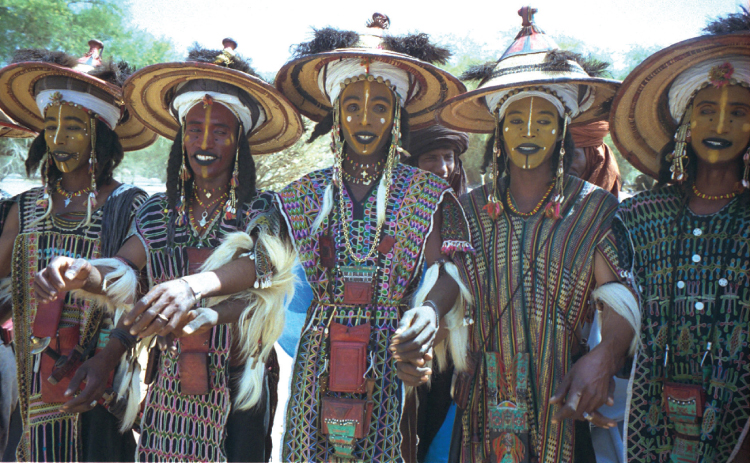
Margaret Mead was among the first anthropologists to explore the social construction of gender cross-culturally in the 1930s. She traveled to New Guinea and studied among three cultural groups, the Arapesh, the Mundugumor and Tchambuli, documenting gender expressions and personalities, describing her findings in Sex and Temperament in Three Primitive Societies (1935). She found that each society had different gender ideologies, and all were significantly distinct from those in the United States at that time. For instance, among the Arapesh both men and women had similar temperaments. They were gentle, cooperative, and sensitive to the needs of others. Men as well as women were intimately involved with parenting and childcare, including infant care. Among the Mundugumor, similar to the Araphesh, both men and women had similar characteristics. However the Mundugamor, by contrast, tended to be aggressive, insecure, selfish, individualistic, violent, and lacking in self-control. The Tchambuli differed from these cultural patterns in that both male and female temperaments were distinct from each other. While they were structurally a patriarchal society, the women tended to be more dominant, impersonal, efficient, and managerial. They often had the last word in economic decisions and asserted their dominant position frequently and in a variety of ways (Mead 1935, 252). Men were typically less responsible, less forceful, more interested in artistic sensibilities and more emotionally dependent.
Mead’s work provided strong evidence against some early twentieth-century anthropology claims positing that specific gender roles and male dominance were part of our evolutionary heritage and fixed characteristics of human biology. This gender ideology argued that males evolved to be food providers—stronger, more aggressive, more effective leaders with cooperative and bonding capacities, planning skills, and technological inventiveness (toolmaking, for example). By contrast, females were never supposed to acquire those capacities because they were burdened by their reproductive roles—pregnancy, giving birth, lactation, and childcare—and thus became dependent on males for food and protection. These gender ideologies were persistent and persuasive; indeed, in many societies today, men are portrayed as active, dominant leaders, and women are viewed as passive, subordinate followers. Similar stories are invoked today for everything from some men’s love of hunting to why men dominate “technical” fields, accumulate tools, have extramarital affairs, or commit the vast majority of homicides.
Strength and toughness remain defining characteristics of masculinity in the United States and other countries. However, decades of research have altered our views of human sex and gender and our evolutionary past. As a way to understand the ways humans evolved, many biological anthropologists look to nonhuman primates for insight, as we share a common ancestor that is more recent than other animals. For many years primatologists believed that nonhuman primates live exclusively in male-centered, male-dominated groups and that females are passive. These assumptions were used to claim that this structure in humans is biologically predestined and based on our evolutionary origins. However, more recent research has shown that, in fact, this does not accurately describe our closest primate relatives: gorillas, chimpanzees, and bonobos.
The stereotypes came from 1960s research on ground-dwelling savannah baboons. It suggested they are organized socially by a stable male-dominant hierarchy. The “core” of the group was established through force and regulated sexual access to females, providing internal and external defense of the “troop” in a supposedly hostile savannah environment. Females were thought to lack hierarchies or coalitions, were passive, and were part of dominant male “harems.” This understanding changed with more nuanced research. Critics first argued that baboons, as monkeys rather than apes,1 were too far removed from humans evolutionarily to tell us much about early human social organization. Then, further research on baboons living in other environments by primatologists such as Thelma Rowell discovered that those baboons are neither male focused nor male dominated. Instead, the stable group core is matrifocal—a mother and her offspring constituted the central and enduring ties. Her research also illustrated that males do not control females’ sexuality. Quite the contrary, in fact: females mate freely and frequently, choosing males of all ages, sometimes establishing special relationships—“friends with favors.” Dominance, while infrequent, is not based simply on size or strength; it is learned, situational, and often stress-induced. And like other primates, both male and female baboons use sophisticated strategies, dubbed “primate politics,” to predict and manipulate the intricate social networks in which they live. Rowell also restudied the savannah baboons. Even they do not fit the baboon “stereotype,” she found that their groups are loosely structured with no specialized stable male-leadership coalitions and are sociable, matrifocal, and infant-centered much like Rhesus monkeys. Females actively initiate sexual encounters with a variety of male partners. When attacked by predators or frightened by some other major threat, males, rather than “defending the troop,” typically flee first, leaving the infant-carrying females to follow behind.
groups of related females (e.g., mother, her sisters, their offspring) form the core of the family and constitute the family’s most central and enduring social and emotional ties.
Research among primates as well as other lines of research are helping us better understand the complex relationship between behavior and biology among male and female primates, including humans. Ongoing research in a variety of disciplines shows that the biological differences between men and women are less pronounced than we believed previously. For instance, research on human parental care has shown that when caring for infants, men excrete equal amounts of hormones oxytocin and prolactin as women do when they go through childbirth and lactation (Gordon 2010). These hormones play an important role in bonding with infants and encourage positive care behaviors, demonstrating that, biologically, men can be equally sensitive to the needs of infants as women.
Like many other primates, humans show a degree of sexual dimorphism, or differences in stature, musculature, and skeletal robustness between males and females, although much less than other primates (see figure 1.5). Yet there is also a lot of variability among males and females. For instance, some females are taller than some males, and some males have more body fat than some females. Research on cross-cultural gender norms, human biology, primatology among others, demonstrates that these differences do not dictate behaviors nor predict abilities in individuals. The relationship between human biology and behavior is much more complex than we ever knew and strongly influenced by culture. In anthropology, looking at the ways in which our biology influences our culture—and how our culture influences our biology—is called the “biocultural” approach and is an exciting and growing area of research.
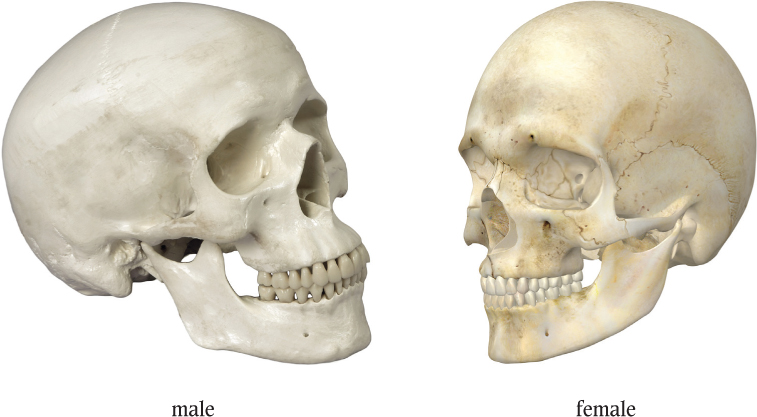
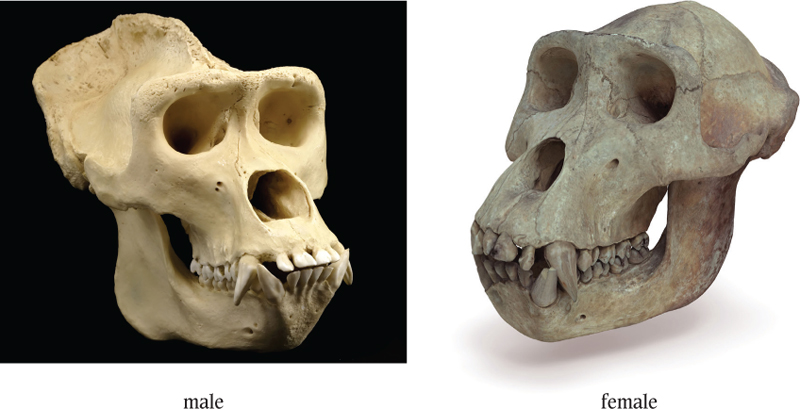
BEYOND THE BINARY
As you have seen, anthropologists love to shake up notions of what is “natural” and “normal.” One common assumption is that all cultures divide human beings into a binary or dualistic model of gender. However, in some cultures gender is more fluid and flexible, allowing individuals born as one biological sex to assume another gender or creating more than two genders from which individuals can select.
Some examples of nonbinary cultures come from precontact Native America. Anthropologists such as Ruth Benedict long ago identified a fairly widespread phenomenon of so-called Two-Spirit people, individuals who did not comfortably conform to the gender roles and gender ideology normally associated with their biological sex. Among the precontact Zuni Pueblo in New Mexico, which was a relatively gender-egalitarian horticultural society, for example, individuals could choose an alternative role of “not-men” or “not-women.” A Two-Spirit Zuni man would do the work and wear clothing normally associated with females, having shown a preference for female-identified activities and symbols at an early age. In some cases, he would eventually marry a man (see figure 1.6). Early European ethnocentric reports often described it as a form of homosexuality. Anthropologists suggested more complex motivations, including dreams of selection by spirits, individual psychologies, biological characteristics, and negative aspects of male roles (e.g., warfare). Most significantly, these alternative gender roles were acceptable, publicly recognized, and sometimes venerated. For example, a Kutenai woman known to have lived in 1811 was originally married to a French-Canadian man but then returned to the Kutenai and assumed a male gender role, changing her name to Kauxuma nupika (Gone-to-the-Spirits), becoming a spiritual prophet, and eventually marrying a woman.
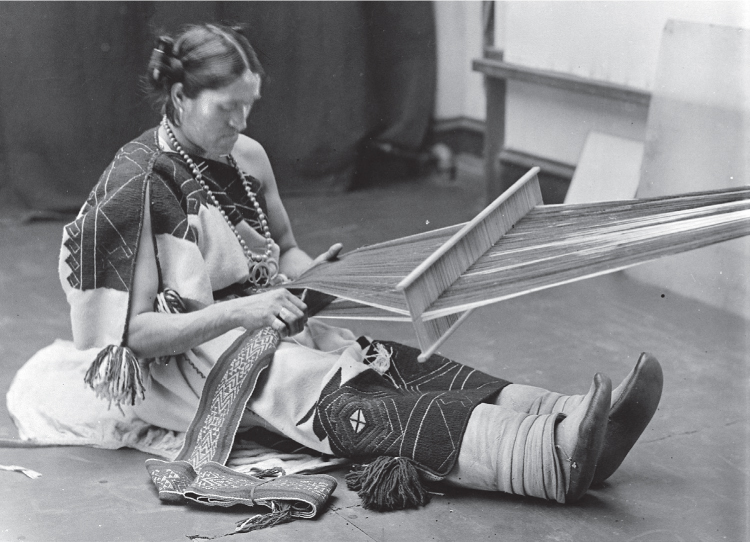
A Native American term referring to individuals who combined gendered activities of both men, giving them a unique status. They were considered neither men nor women but were seen as a distinct, alternative third gender.
Burrnesha, or “sworn virgins” in Albania are another example of a third gender. In traditionally patriarchal parts of Albanian society, gender roles are strict and place substantial limitations on women. Sworn virgins are women who renounce sexual relations completely to become honorary men, taking on the role of the man in their household and community; they dress, act, and are treated as men (enjoying the relative freedoms of men as well) (see figure 1.7). Another, more well-known example of a nonbinary gender system is found among the Hijra in India, who are discussed in greater detail in chapter 5 of this book (see figure 1.9). Often referred to as a third gender, these individuals are usually biologically male but adopt female clothing, gestures, and names; eschew sexual desire and sexual activity; and go through religious rituals that give them certain divine powers, including blessing or cursing couples’ fertility and performing at weddings and births. Hijra may undergo voluntary surgical removal of genitals through a nirvan or rebirth operation. Some hijra are males born with ambiguous external genitals, such as a particularly small penis or testicles that did not fully descend.

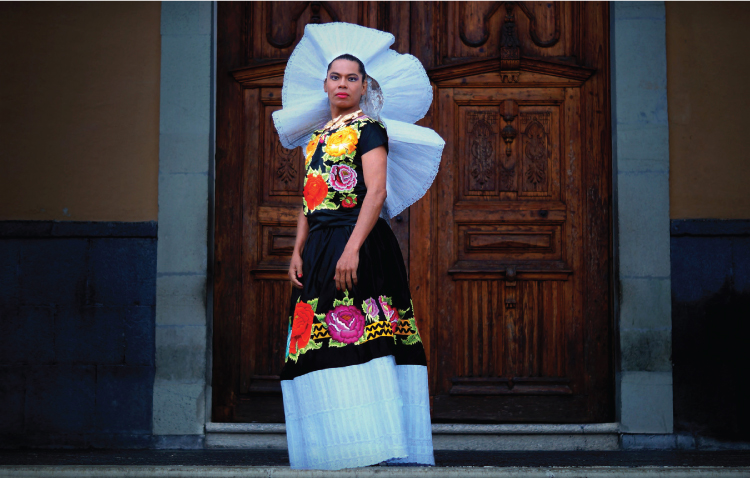
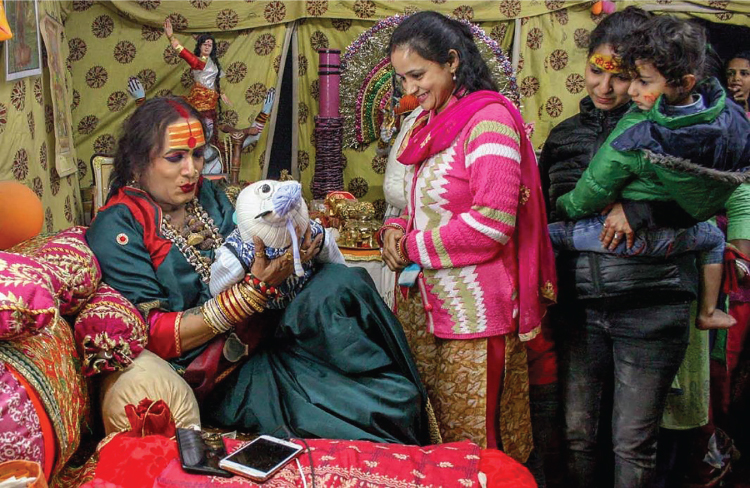
a gender identity that exists in nonbinary gender systems offering one or more gender roles separate from male or female.
As we have discussed in the section “What Is Sex?,” research has shown that individuals with ambiguous genitals, sometimes called “intersex,” are surprisingly common, as are those whose internal gender identity does not conform to their socially recognized gender or sex. So what are cultures to do when faced with an infant or child who cannot easily be “sexed”? Some cultures, including in the United States, used to force children into one of the two binary categories, even if it required surgery or hormone therapy. But in other places, such as India and among the Isthmus Zapotec in southern Oaxaca, Mexico, they have instead created a third gender category that has an institutional identity and role to perform in society (Mirande 2015) (see figure 1.8).
These cross-cultural examples demonstrate that the traditional rigid binary gender model in the United States is neither universal nor necessary. While all cultures recognize at least two biological sexes, usually based on genitals visible at birth (and have created at least two gender roles), many cultures go beyond the binary model, offering a third or fourth (or more) gender categories. Other cultures allow individuals to adopt, without sanctions, a gender role that is not congruent with their biological sex. In short, biology need not be destiny when it comes to gender roles, as we are increasingly discovering in the United States. Or, as Anne Fausto-Sterling asserts, “Sex and gender are best conceptualized as points in a multidimensional space” (Fausto-Sterling 2000). Indeed, research is increasingly pointing to considerable flexibility in gender and sex throughout human cultures.
Menstrual Equity
Ambivalence and even fear of female sexuality, or negative associations with female bodily fluids, such as menstrual blood, are widespread in the world’s major religions. Orthodox Jewish women are not supposed to sleep in the same bed as their husbands when menstruating. In Kypseli, Greece, people believe that menstruating women can cause wine to go bad. In some Catholic Portuguese villages, menstruating women are restricted from preparing fresh pork sausages and from being in the room where the sausages are made as their presence is believed to cause the pork to spoil. Contact with these women also supposedly wilts plants and causes inexplicable movements of objects. Orthodox forms of Hinduism prohibit menstruating women from activities such as cooking and attending temples. These traditions are being challenged. A 2016 British Broadcasting Company (BBC) television program, for example, described “Happy to Bleed,” a movement in India to change negative attitudes about menstruation and eliminate the ban on menstruating-age women entering the famous Sabriamala Temple in Kerala. Activists around the world have launched social movements and other projects to make menstruation less taboo and make feminine hygiene products more easily accessible. The film Period End of Sentence, which won the 2018 Oscar for Best Documentary, illustrates one example of such an effort in India. The profile that follows describes another important project to further menstrual equity in Zimbabwe.
For more information on the menstrual equity movement, visit The Pad Project: https://thepadproject.org/
PROFILE: SAVE THE GIRL CHILD MOVEMENT
Nolwazi Ncube, University of Cape Town
Save the Girl Child Movement (SGCM; https://www.savethegirlchildmovement.org/) with its flagship program, “Save the Girl-with-a-Vision” (SGV) was founded by Nolwazi Ncube, a Zimbabwean menstrual activist. Girls in Zimbabwe are said to miss as many as 528 days across the full span of their school-going years. SGV is a rural development program in the Umzingwane District of Zimbabwe, which was established to combat this problem and improve educational outcomes for adolescent girls. SGV is a multipronged program providing: (1) sanitary wear relief, (2) mentorship, and (3) financial support. SGV beneficiaries or “Saved Girls” receive free sanitary wear from the time they enter into the program until they have finished school. We have chosen to focus our activities in the Umzingwane district, which lies in the underserved and historically underdeveloped area of Matabeleland South Province; however, SGV also makes donations to other communities in need outside of Umzingwane, since the need for sanitary wear is a nationwide issue. There is an uneven division of the burden of domestic labor that falls more heavily on the shoulders of girls than boys. Cultural practice dictates that disposable sanitary wear is not meant to be disposed of along with household trash. As a result, girls must go into the field or forest and make a fire to burn and dispose of it. SGV focuses mostly on the provision of reusable pads for rural girls as it is their expressed preference, since disposable sanitary wear comes with its own encumbrances that add to the burden of labor they already participate in.
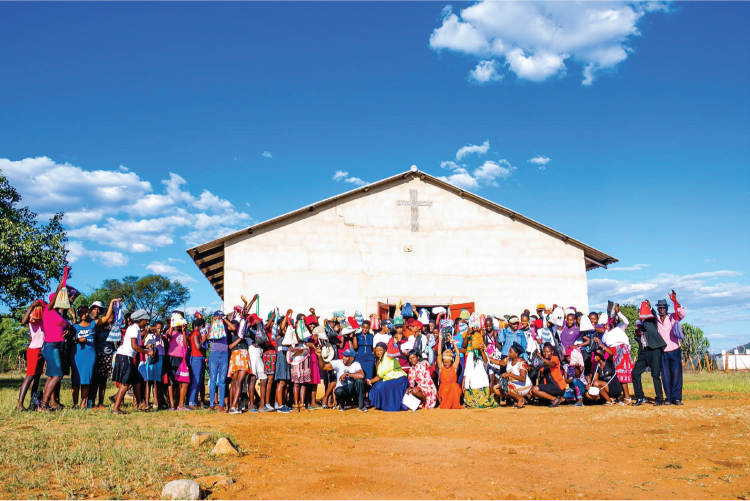
The high school completion rate for girls in the catchment area is very low, as they are faced with many different challenges that impact their educational outcomes. In order to assist with this, the SGV program has developed a set of criteria for prioritizing its most needy girls who are at high risk of dropping out of school. It considers factors such as orphanhood, family income, and stability of family structure. SGV also has a “buy-a-bike” initiative whereby sponsors can purchase a bike for a girl and to make the distance to the nearest secondary schools more manageable. Save the Girl Child Movement is supported by a small donor called the Geddes Foundation in Cyprus; donations can also be made on this web link: geddesfoundation.com/save-the-girl/.
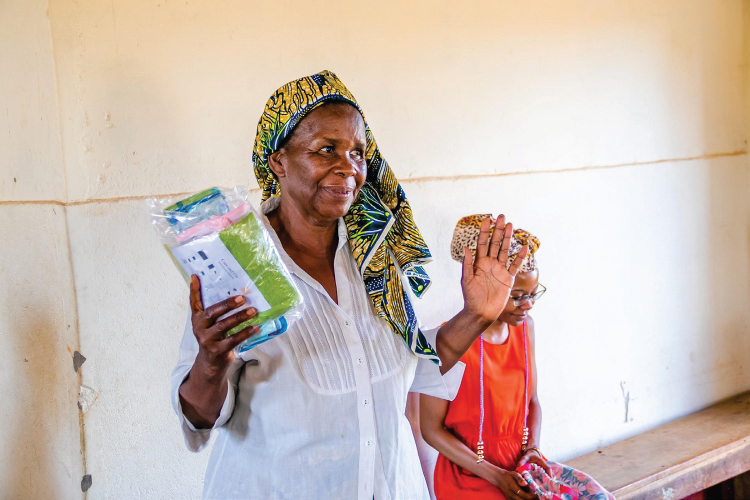
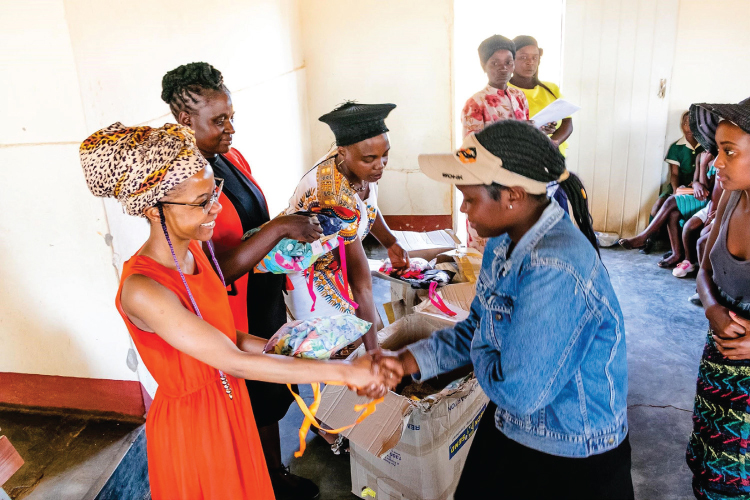
Each year to raise menstrual education and hygiene awareness and mobilize funds for program activities, Save the Girl Child Movement launches its annual Let’s Get Padded Up #LGPU campaign (www.gofundme.com/lets-get-padded-up-campaign) with the tagline “Every girl needs pads. PERIOD.” Let’s Get Padded Up fundraisers are organized in conjunction with strategic partners—with special mention to the Rotaract Club of Harare West, the Rotary Club of Harare West, and the Rotaract Club of Borrowdale Brooke. Rotaract clubs are the youth program for Rotary International for young adults up to age thirty. With the help of these clubs, the 2018 Let’s Get Padded Up campaign met its target and was able to obtain a donation of five hundred sanitary hygiene kits from Days for Girls, a nonprofit organization in Australia that sews washable sanitary wear.
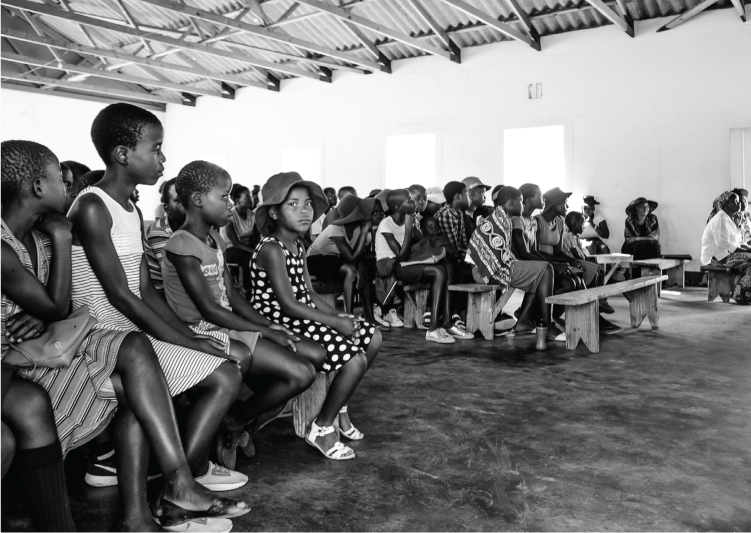
MASCULINITY
Contributing Author: Melanie Medeiros, SUNY Geneseo
Students in gender studies and anthropology courses on gender are often surprised to find that they will be learning about men as well as women. Early women’s studies initially employed what has been called an “add women and stir” approach, which led to examinations of gender as a social construct and of women’s issues in contemporary society. In the 1990s women’s studies expanded to become gender studies, incorporating the study of other genders, sexuality, and issues of gender and social justice. Gender was recognized as being fundamentally relational: femaleness is linked to maleness, femininity to masculinity. One outgrowth of that work is the field of “masculinity studies.” The interdisciplinary study of men and masculinities dates back to the 1970s and consists of a wide field of methodological approaches and thematic foci. As the field has evolved, so have scholars’ approaches to defining masculinity. Essentialist definitions of masculinity identify certain characteristics, such as physical strength or a short temper, as intrinsically masculine and argue that masculinity is something physically or psychologically inherent in cisgender men (hereafter referred to simply as “men”)—that results in these characteristics, irrespective of social or cultural influences. Gender scholars since the 1970s have refuted essentialist notions that there are biological underpinnings to gender norms, roles, and identities that make gender universal (Fausto-Sterling 2013 [2000]). However, studies of masculinity do tend to define masculinity based on the mainstream idea of a gender binary that includes the categories of “men” and “women,” which leads to a relational definition of “masculinity” that describes it as being in contrast to “femininity,” emphasizing the perceived differences between genders, as well as within gender categories (Connell 2016; Gutmann 1997). Therefore the notion of masculinity and the study of it is more common in societies that emphasize a distinct gender binary, such as in Europe and North America since the nineteenth century (Connell 2016). In the 1990s scholarship shifted from the term masculinity (singular) toward the concept of masculinities (Connell 2005 [1995]), which acknowledges that there are many forms of masculinity and that there is gender stratification among men—not just between men and women. Conventionally, “masculinity” is an ideal of what society expects men to be and how to act, while the acknowledgment of multiple “masculinities” recognizes that there are men who may or may not aspire to or fulfill local expectations of masculine performance (Connell 2016). Connell (2016) argues, “Rather than attempting to define masculinity as an object (a natural character type, a behavioral average, a norm), we need to focus on the processes and relationships through which men and women conduct gendered lives. ‘Masculinity,’ to the extent the term can be briefly defined at all, is simultaneously a place in gender relations, the practices through which men and women engage that place in gender, and the effects of these practices in bodily experience, personality and culture” (138). In other words, masculinity is not a fixed and tangible object or archetype but a constantly negotiated gender performance that is often part of one’s gender identity and gender relations.
a term used to describe those who identify with the sex and gender they were assigned at birth.
the culturally specific traits, behaviors, and discourses expected of men.
Gender scholars have studied masculinity among cisgender men, trans men, and cisgender men and women identifying as gay or queer (Abelson 2016; Connell 2005 [1995], 2001; Gutmann 2007 [1996]); Halberstam 2018 [1998]; Inhorn 2012; Mitchell 2015; Parker 2003; Schilt 2010). These scholars have examined a wide range of topics related to masculinities. For example, some scholars have focused on gender hierarchies and inequality between men and women and among men as well (Wade and Ferree 2019). There is a substantial body of literature on the relationship between men, masculinity, and violence, including examining men as perpetrators and victims of violence (Abelson 2016; Ellis 2016). Another topic of study is representations of men and masculinity in the media (Keith 2017; Zeglin 2016). Scholars have also been interested in understanding masculinities in relationship to kinship and parenting (Edley 2017; Keith 2017). Scholars examine masculinity in conjunction with sexuality, sexual orientation, as well as the relationship between masculinity and homophobia (Bucher 2014; Edley 2017). Ethnographic studies of masculinity highlight cross-cultural and intracultural variation in the construction and performance of masculinity (Conway-Long 1994; Ellis 2016; Gutmann 1997, 2003, 2007 [1996]; Mitchell 2015; Wentzell 2013).
THEORIES OF MASCULINITIES
By far the most frequently utilized theory of masculinities is Connell’s (1995) hegemonic masculinity theory (HMT). The theoretical concept of hegemony (Gramsci 1971) explains how power can function without force when a dominant social group creates collective agreement within a society about such things as behavioral norms, beliefs, and values. This collective consent naturalizes both the power and prestige of the dominant group, as well as social inequality. For example, many people in the United States believe class inequality is a natural product of human behavior rather than the outcome of our political economic system or the value of individualism. Beliefs or ideals are hegemonic when they are taken for granted and viewed as inevitable realities rather than products of society and culture and when they are supported by the dominant groups who benefit from them and by the marginalized groups who do not benefit. “Hegemony, then, means widespread consent to relations of systematic social disadvantage” (Wage and Ferree 2019, 137) often involving the “willing compliance of the oppressed” (Anderson 2016, 184). Hegemonic masculinity theory in turn argues that there are certain traits, behaviors, and discourses associated with masculinity and the performance of masculinity that are valued and rewarded by a culture or society’s dominant social groups. As a result, the performance of and practices associated with hegemonic masculinity help to legitimize power and inequality, or more specifically according to Connell—patriarchy. Therefore, hegemonic masculinity is not only a society’s ideal of manhood but part of a system of social and gender inequality that preferences certain traits, practices, and discourses over others, oppressing and marginalizing both men and women who do not meet this standard (Wage and Ferree 2019).
a theory developed by Connell (1995) arguing that there are certain traits, behaviors, and discourses associated with masculinity that are valued and rewarded by a culture or society’s dominant social groups and that the performance of hegemonic masculinity helps to legitimize power and inequality, or more specifically, patriarchy.
the dominance of one group over another supported by legitimating norms and ideas that normalize dominance. Using collective consent rather than force, dominant social groups maintain power and social inequalities are naturalized.
a dynamic system of power and inequality that privileges men and boys over women and girls in social interactions and institutions.
According to Connell (2005 [1995]) there are three categories of masculinities subsumed by the term hegemonic masculinity: complicit, subordinated, and marginalized. Individuals who exhibit the traits or practices associated with hegemonic masculinity, or who aspire to them, would be “complicit” within this gender system. Connell described men whose other social identities—particularly race and class—place them outside the dominant social groups as having “marginalized” masculinities because their position on the gender hierarchy is beneath that of the dominant group of men who more closely approximate hegemonic masculinity. Interestingly, Connell opted to distinguish sexual orientation from other forms of social identity, arguing that the masculinities of gay men were “subordinated” rather than marginalized. As such, Connell argued that heterosexuality is a key component of hegemonic masculinity, and other scholars have built from this theory to argue that hegemonic masculinity and homophobia are mutually constitutive. As one scholar observed, “Homophobia is not only a tool to enforce masculinity, but is a part of how hegemonic masculinity is constructed. Meaning, just as heterosexuality is part of ‘being a man,’ so too is denying the masculinity of gay men” (Bucher 2014, 225). Hegemonic masculinity theory opened up awareness that there are many forms of masculinity, that traits and behaviors of men who do not approximate hegemonic masculinity are policed (physically and discursively) and marginalized, and thus not all men hold an equal position on the gender hierarchy (Anderson 2016; Wage and Ferree 2019). Hegemonic masculinity theory pioneered new directions in gender scholarship and continues to be one of the most widely used theoretical approaches to studying masculinities.
However, no theory is without critique. Anderson (2016) suggests that in using the concept of hegemony, HMT is problematic on the one hand because it does not grant individuals agency to question or challenge hegemonic norms and on the other because it treats hegemonic masculinity as “an archetype of masculinity” rather than “a social process.” (Anderson 2016, 183). Revisiting their theory in 2016, Connell does note that the characteristics a society or culture value and associate with ideal masculinity are constantly in flux, and therefore hegemonic masculinity “can be defined as the configuration of gender practice which embodies the currently accepted answer to the problem of the legitimacy of patriarchy which guarantees (or is taken to guarantee) the dominant position of men and the subordination of women” (Connell 2016, 139). Anderson (2016) also points out that while HMT was very useful for examining masculinities in North America in the 1980s and 1990s, it is less applicable in a contemporary North American society. They argue that since heterosexuality and the subjugation of gay or queer men is a key component of HMT, the theory is no longer relevant in a society, or among subgroups (e.g., high school students) for whom heteronormativity is no longer a hegemonic ideal. I offer a similar critique, that HMT—with its emphasis on heteronormativity—is inadequate for examining masculinity in societies where sexuality and sexual orientation are more fluid than the gay/straight binary discussed by gender scholars of North America in the late twentieth century. Therefore, valuing the contributions of HMT but recognizing its shortcomings, scholars today employ several alternative concepts, such as “mainstream,” “dominant,” and most frequently “normative” masculinities to examine the ways that certain traits, behaviors, and practices are idealized by a society, and how those ideals are constantly changing in response to social, cultural, and political economic changes.
a term coined by French philosopher Michel Foucault to refer to the often-unnoticed system of rights and privileges that accompany normative sexual choices and family formation.
Ethnographic studies have contributed a more nuanced approach to the study of masculinities and provide evidence showing that there can be multiple (more than three) masculinities in a given setting and that men are not necessarily aspiring toward one dominant ideal, nor are they limited to one form of masculine performance and identity. Men can aspire to a dominant or normative form of masculinity, challenge norms, or combine aspects of normative gender scripts and performances to create a hybrid form of masculinity that is unique or useful to them in a given space and time (Giddings and Hovorka 2010). For example, Gutmann describes how men in Mexico perform a multiplicity of masculinities both in the public sphere and in the home (Gutmann 2007 [1996]). Terms such as variant masculinities (Fonseca 2001; Lindisfarne 1994), emerging masculinities (Inhorn 2012), composite masculinities (Wentzell 2013), and inclusive masculinities (Anderson 2016) challenge the assumption of a fixed or “traditional” masculinity, and show that not all people subscribe to gender norms that reinforce the power of dominant groups while oppressing others.
CONCLUSION
In this chapter we have examined some of the key concepts that will be used throughout this book, including gender, sex, and sexuality as well as nonbinary gender expressions throughout the world. We also addressed how gender is fundamentally shaped by culture and how all gender expressions, including masculinity, must be understood in relation to one another and in the cultural context in which they occur. As you go through the chapters of the book you may wish to refer back to these concepts, using them as a guide and reference to understand the various global perspectives on gender. These key concepts will also form the foundation for the following chapter, which introduces the key perspectives used in this book. These are exciting and perhaps challenging ideas, as they address intimate parts of our own identities and worldviews.
REVIEW QUESTIONS
- Discuss how sex, gender, and sexuality are related but also distinct concepts.
- Discuss two examples of how gender is shaped by culture.
- Identify some cross-cultural examples of nonbinary gender expressions.
- Explain how gender is relational, such as how masculinity is relational to other gender expressions.
KEY TERMS
biological determinism: the scientifically unsupported view that biological differences (rather than culture) between males and females lead to fundamentally different capacities, preferences, and gendered behaviors.
cisgender: a term used to describe those who identify with the sex and gender they were assigned at birth.
cultural relativism: the idea that we should seek to understand another person’s beliefs and behaviors from the perspective of their own culture and not our own.
ethnocentric/ethnocentrism: the tendency to view one’s own culture as most important and correct and as the yardstick by which to measure all other cultures.
ethnography: the in-depth study of the everyday practices and lives of a people.
gender: the set of culturally and historically invented beliefs and expectations about gender that one learns and performs. Gender is an “identity” one can choose in some societies, but there is pressure in all societies to conform to expected gender roles and identities.
gender ideology: a complex set of beliefs about gender and gendered capacities, propensities, roles, identities, and socially expected behaviors and interactions that apply to males, females, and other gender categories. Gender ideology can differ across cultures and is acquired through enculturation.
hegemony/hegemonic: the dominance of one group over another supported by legitimating norms and ideas that normalize dominance. Using collective consent rather than force, dominant social groups maintain power and social inequalities are naturalized.
holistic/holism: the idea that the parts of a system interconnect and interact to make up the whole.
hegemonic masculinity theory (HMT): a theory developed by Connell (1995) arguing that there are certain traits, behaviors, and discourses associated with masculinity that are valued and rewarded by a culture or society’s dominant social groups and that the performance of hegemonic masculinity helps to legitimize power and inequality, or more specifically, patriarchy.
heteronormativity: a term coined by French philosopher Michel Foucault to refer to the often-unnoticed system of rights and privileges that accompany normative sexual choices and family formation.
masculinity: the culturally specific traits, behaviors, and discourses expected of men.
matrifocal: groups of related females (e.g., mother, her sisters, their offspring) form the core of the family and constitute the family’s most central and enduring social and emotional ties.
patriarchy: a dynamic system of power and inequality that privileges men and boys over women and girls in social interactions and institutions.
sex: refers to male and female identity based on internal and external sex organs and chromosomes. While male and female are the most common biologic sexes, a percentage of the human population is intersex with ambiguous or mixed biological sex characteristics.
third gender: a gender identity that exists in nonbinary gender systems offering one or more gender roles separate from male or female.
transgender: a category for people who transition from one sex to another, either male-to-female or female-to-male.
Two-Spirit: Traditionally a Native American term referring to individuals who combined gendered activities of both men, giving them a unique status. They were considered neither men nor women but were seen as a distinct, alternative third gender.
RESOURCES FOR FURTHER EXPLORATION
- Are Men Animals? How Modern Masculinity Sells Men Short (2019) by Matthew Gutman. Basic Books
- Masculinities under Neoliberalism. 2016. Edited by Andrea Cornwall, Frank Karioris, and Nancy Lindisfarne. London: Zed.
- Toward An Anthropological Understanding of Maleness and Violence. 2019.
- Fausto-Sterling, Anne. 2012. Sex/Gender: Biology in a Social World. New York: Taylor and Francis.
BIBLIOGRAPHY
Abelson, Miriam J. 2016. “Negotiating Vulnerability and Fear: Rethinking the Relationship Between Violence and Contemporary Masculinity.” In Exploring Masculinities: Identity, Inequality, Continuity, and Change, edited by C. J. Pascoe and T. Bridges, 337–347. New York: Oxford University Press.
Anderson, Eric. 2016. “Inclusive Masculinities.” In Exploring Masculinities: Identity, Inequality, Continuity, and Change, edited by C. J. Pascoe and T. Bridges, 178–187. New York: Oxford University Press.
Bucher, Jacob. 2014. “But He Can’t Be Gay”: The Relationship between Masculinity and Homophobia in Father-Son Relationships. Journal of Men’s Studies 22, no. 3: 222–237.
Connell, Raewyn. 2005 [1995]. Masculinities. Cambridge, UK: Polity.
Connell, Raewyn. 2001. The Men and The Boys. Berkeley: University of California Press.
Connell, Raewyn. 2016. “The Social Organization of Masculinity.” In Exploring Masculinities: Identity, Inequality, Continuity, and Change, edited by C. J. Pascoe and T. Bridges, 136–144. New York: Oxford University Press.
Conway-Long, Don. 1994. “Ethnographies and Masculinities.” In Theorizing Masculinities, edited by H. Brod and M. Kaufman, 61–81. New York: SAGE.
Edley, Nigel. 2017. Men and Masculinity: The Basics. New York: Routledge.
Ellis, Anthony. 2016. Men, Masculinities, and Violence: An Ethnographic Study. London: Routledge.
Fausto-Sterling, Anne. 2000. “The Five Sexes, Revisited.” The Sciences 40, no. 4: 18–23.
Fausto-Sterling, Anne. 2013 [2000]. “Dueling Dualisms.” In Sex, Gender and Sexuality: The New Basics, edited by A. L. Ferber, K. Holcomb and T. Wentling, 6–34. New York: Oxford University Press.
Giddings, Carla, and Alice Hovorka. 2010. “Place, Ideological Mobility and Youth Negotiations of Gender Identities in Urban Botswana.” Gender, Place & Culture 17, no. 2: 211–229.
Gutmann, Matthew. 1997. “Trafficking in Men: The Anthropology of Masculinity.” Annual Review of Anthropology 26: 385–409.
———. 2003. Changing Men and Masculinities in Latin America. Durham, NC: Duke University Press.
———. 2007 [1996]. The Meanings of Macho. Berkeley: University of California Press.
Halberstam, Jack. 2018 [1998]. Female Masculinity. Durham, NC: Duke University Press.
Imperato-McGinley, Julianne, Teofilo Gautier Guerrero, and Ralph Peterson. 1974. “Steroid 5α-Reductase Deficiency in Man: An Inherited Form of Male Pseudohermaphroditism.” Science 186, 4170 (December 1974): 1213–1215.
Inhorn, Marcia C. 2012. The New Arab Man: Emergent Masculinities, Technologies, and Islam in the Middle East. Princeton, NJ: Princeton University Press.
Keith, Thomas. 2017. Masculinities in Contemporary American Culture: An Intersectional Approach to the Complexities and Challenges of Male Identity. New York: Routledge.
Lindisfarne, N. 1994. “Variant Masculinities and Variant Virginities: Rethinking ‘Honor and Shame.’ ” In Dislocating Masculinity: Comparative Ethnographies, edited by A. Cornwall and N. Lindisfarme, 82–96. London: Routledge.
Lorber, Judith. [2005] 2013. “A World without Gender: Making the Revolution.” In Sex, Gender and Sexuality: The New Basics, edited by A. L. Ferber, K. Holcomb and T. Wentling, 401–409. New York: Oxford University Press.
Mirande, Alfredo. 2015. “Hombres Mujeres: An Indigenous Third Gender.” Men and Masculinities, 1–27. Los Angeles: SAGE.
Nelson, Katie; Braff, Lara. 2020. Perspectives: An Open Invitation to Cultural Anthropology. 2nd ed. Arlington, VA: American Anthropological Association.
Parker, Richard. 2003. “Changing Sexualities: Masculinity and Male Homosexuality in Brazil.” In Changing Men and Masculinities in Latin America, edited by M. C. Gutmann, 307–332. Durham, NC: Duke University Press.
Petersen, Alan. 2016. “Research on Men and Masculinities: Some Implications of Recent Theory for Future Work.” In Exploring Masculinities: Identity, Inequality, Continuity, and Change, edited by C. J. Pascoe and T. Bridges, 337–347. New York: Oxford University Press.
Schilt, Kristen. 2010. Just One of the Guys? Transgender Men and the Persistence of Gender Inequality. Chicago and London: University of Chicago Press.
Shook, Beth, Katie Nelson, Kelsie Aguilera, and Lara Braff. 2019. Explorations: An Open Invitation to Biological Anthropology. Arlington, VA: American Anthropological Association.
van Anders, S. M., J. Steiger, and K. L. Goldey. 2015. Effects of gendered behavior on testosterone in women and men. Proceedings of the National Academy of Sciences of the United States of America 112, no. 45, 13805–13810. doi.org/10.1073/pnas.1509591112
CREDITS
Some sections of this chapter were adapted from work by Deborah Amory and “Gender and Sexuality,” chapter 10 by Carol C. Mukhopadhyay and Tami Blumenfield (with Susan Harper and Abby Gondek) in Perspectives: An Open Introduction to Cultural Anthropology, ed. Nina Brown, Thomas McIlwraith, and Laura Tubelle de González, 2nd ed. (Washington, DC: American Anthropological Association, 2020).


